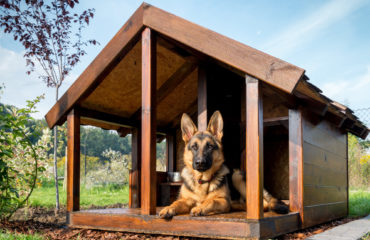The Role of Kennels in Dog Training

When training your dog, the process involves the use of various methods and tools. Kennels can help simplify this process, making it easier to manage your furry friend in their various training routines. This blog will explore the role of kennels in dog training, highlighting how they can foster good habits and support a positive training experience for both dogs and their owners.
Benefits of Using Kennels in Dog Training
When used correctly kennels can offer multiple benefits that will greatly benefit and enhance the effectiveness of your dog’s training.
Safe And Secure Environment
Kennels create a safe and secure environment for dogs. This space helps reduce anxiety and stress, providing a retreat where dogs can relax and feel protected. Keeping them relaxed will allow them to understand what it is they are being taught, instead of possibly worrying about not understanding or doing it properly.
Another, more primary, use of kennels is the in-house training of puppies. Dogs naturally avoid soiling their sleeping area, making kennels an effective tool for teaching bladder and bowel control.
Preventing Destructive Behaviour And Separation Anxiety
Also ideal for puppies, keeping a dog in a kennel when unsupervised prevents destructive behaviour such as chewing on furniture or household items. This ensures the safety of both the dog and the home environment, also helping manage separation anxiety by teaching dogs to be comfortable when left alone. This independence-building is crucial for those who struggle with being apart from their owners.
Independence In Dogs
Kennel training encourages a sense of independence in dogs. They learn to enjoy their own company, benefitting their mental well-being. By integrating kennels into dog training routines thoughtfully and consistently, owners can maximise these benefits, leading to well-behaved, well-adjusted pets.
Common Mistakes To Avoid In Kennel Training
Kennel training can be highly effective when done correctly, but several common mistakes can slow the process and cause unnecessary stress for both dogs and their owners.
Using the Kennel as Punishment
The first is to never use the kennel as a form of punishment. This creates a negative association, making the dog fearful and resistant to entering the kennel voluntarily. Punishing a dog by placing them in the kennel can also increase their stress and anxiety, defeating the purpose of providing a safe and secure space.
Inconsistent Training
Inconsistency in training methods or routines can confuse the dog. It’s important to establish a clear and consistent approach to kennel training. Do this by regularly reinforcing positive behaviour associated with the kennel to build a strong, positive association.
Leaving the Dog in the Kennel for Too Long
Dogs should not be confined to the kennel for extended periods. This can lead to physical discomfort, lack of exercise, and behavioural issues. Ensure your dog gets regular breaks for exercise, play, and social interaction. Balance kennel time with adequate physical and mental stimulation.
Improper Kennel Size
It’s important to select the best-sized kennel for your dog, as based on their size it could cause discomfort. A kennel that is too small can be uncomfortable and restrict movement, leading to physical and psychological distress. Alternatively, a kennel that is too large may not provide the sense of security dogs need, and may also hinder house training efforts.
Ensure the kennel is appropriately sized, allowing the dog to stand, turn around, and lie down comfortably. Read our “Choosing the Right Kennel for Your Dog” blog for more information.
By avoiding these mistakes and playing to the benefits previously mentioned, we can guarantee your dog will find training much easier. Shop our premium dog kennels online today to find the one suited to your pup best.



